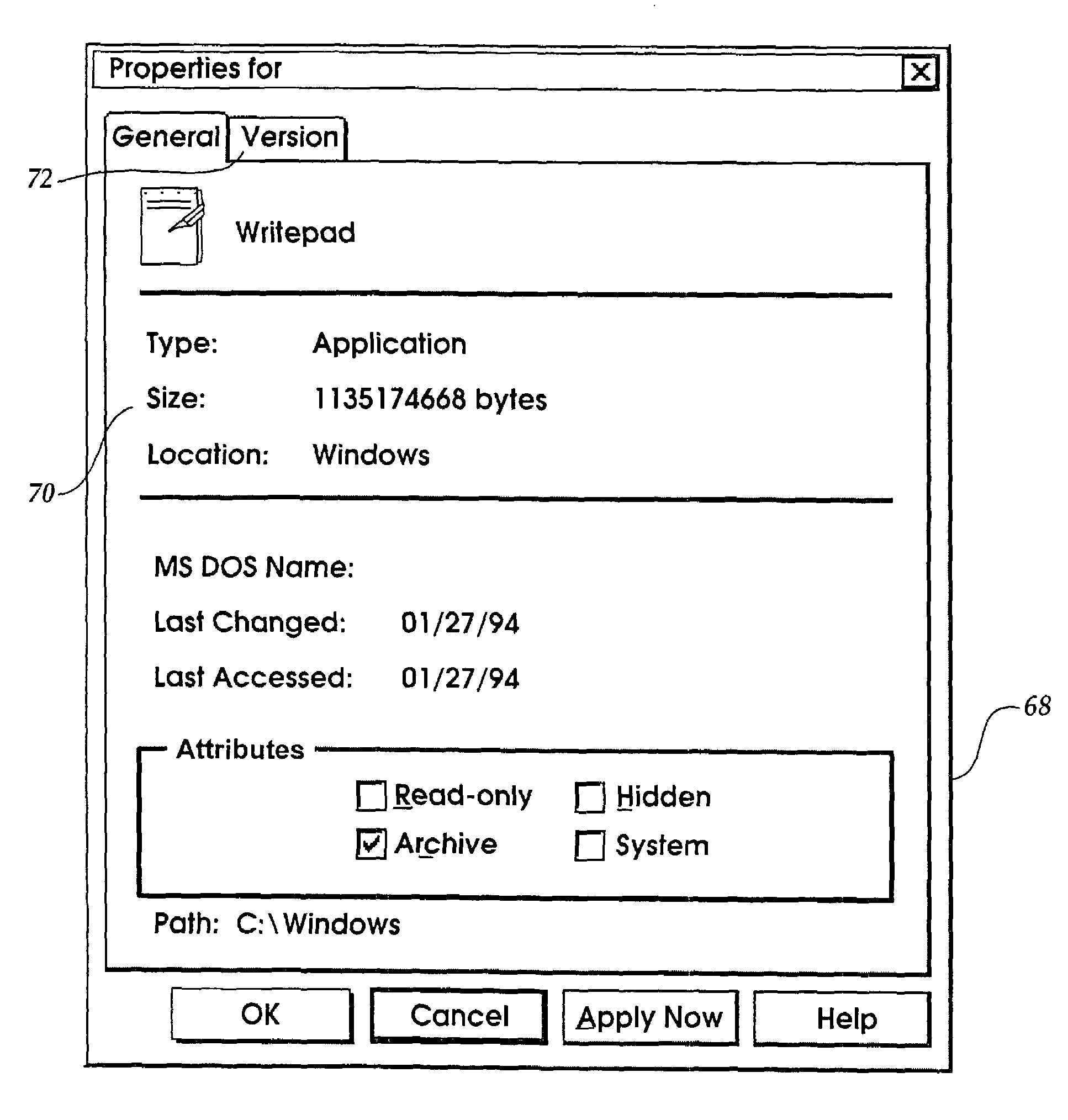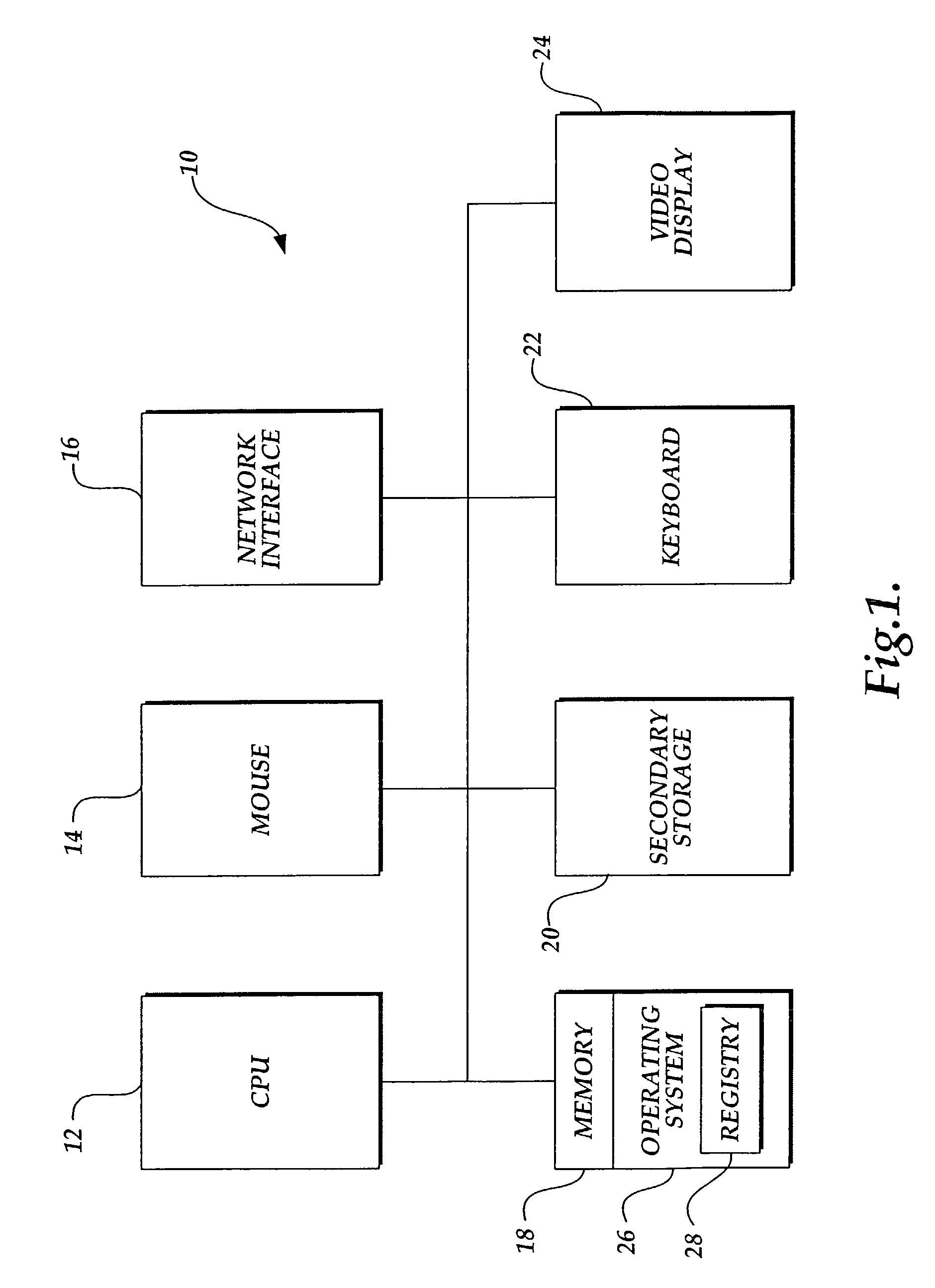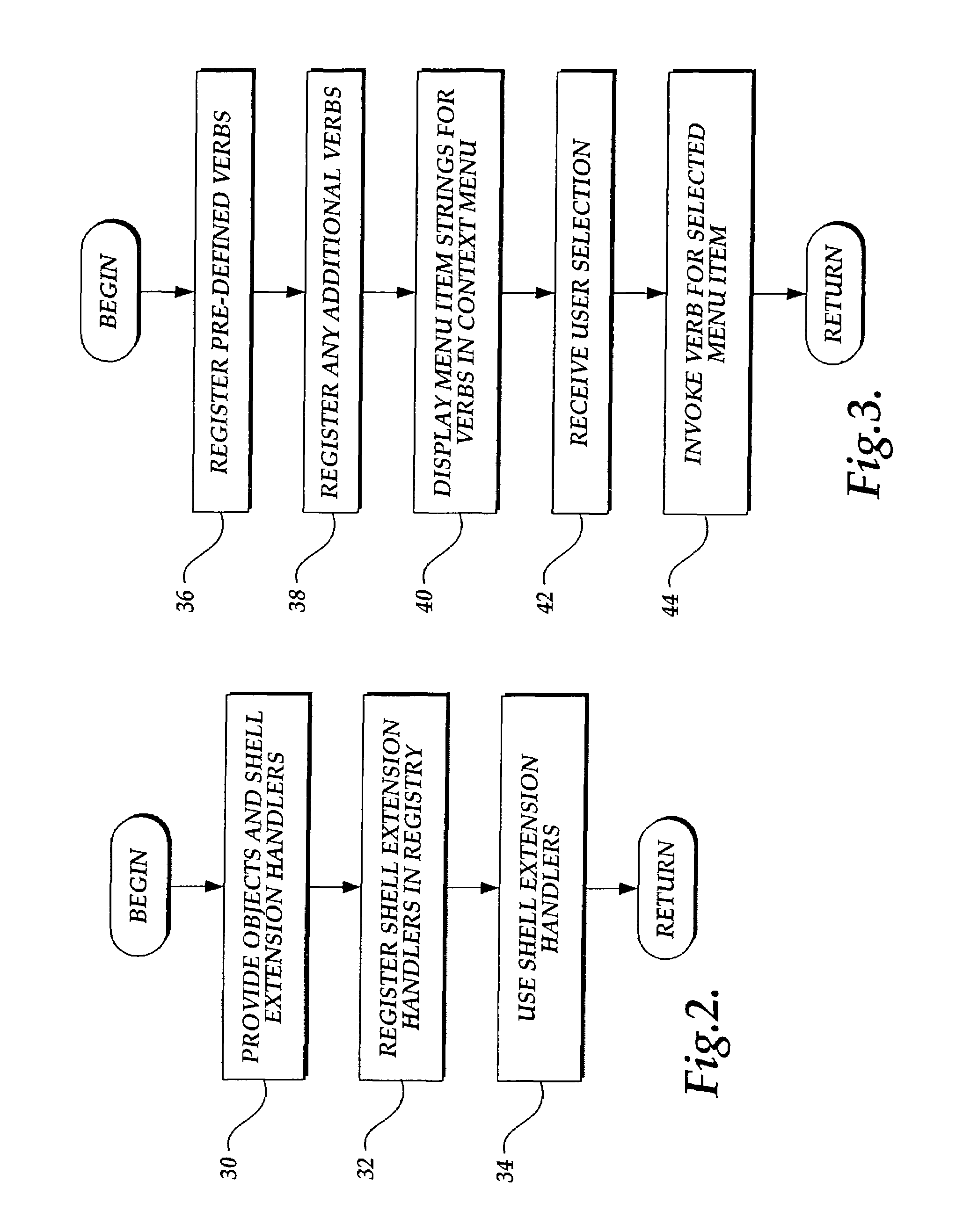Shell extensions for an operating system
an operating system and shell technology, applied in the field of data processing systems, can solve the problems of limited flexibility, limited list of menu items and associated operations provided by shells for context menus, and inability to change menu items by applications
- Summary
- Abstract
- Description
- Claims
- Application Information
AI Technical Summary
Benefits of technology
Problems solved by technology
Method used
Image
Examples
Embodiment Construction
[0036]The preferred embodiment of the present invention extends the capabilities provided by a shell of an operating system to allow an application developer to customize context menus, add property sheet pages for objects and provide per-instance icons for objects Further, the preferred embodiment of the present invention facilitates the customization of drop behavior and the customization of source objects in drag-and-drop operations on a per-object type basis. A copy-hook handler is provided to enable an application to grant or withhold approval of copy, delete, move or rename commands on objects. In addition, the preferred embodiment of the present invention facilitates the addition of new name spaces to a name space that is visible through a browsing system-provided tool (known as the “explorer”). These shell extensions allow developers to customize to better suit the needs of their users.
[0037]The preferred embodiment of the present invention is practiced in an object-oriented...
PUM
 Login to View More
Login to View More Abstract
Description
Claims
Application Information
 Login to View More
Login to View More - R&D
- Intellectual Property
- Life Sciences
- Materials
- Tech Scout
- Unparalleled Data Quality
- Higher Quality Content
- 60% Fewer Hallucinations
Browse by: Latest US Patents, China's latest patents, Technical Efficacy Thesaurus, Application Domain, Technology Topic, Popular Technical Reports.
© 2025 PatSnap. All rights reserved.Legal|Privacy policy|Modern Slavery Act Transparency Statement|Sitemap|About US| Contact US: help@patsnap.com



